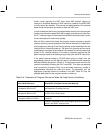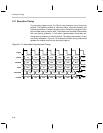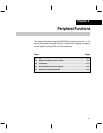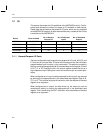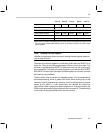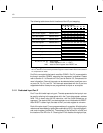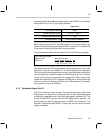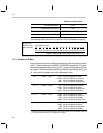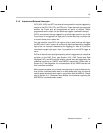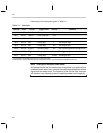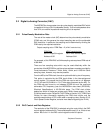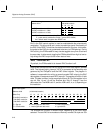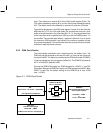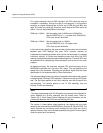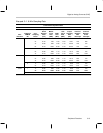
I/O
3-7Peripheral Functions
3.1.5 Internal and External Interrupts
INT3, INT4, INT6, and INT7 are external interrupts which may be triggered by
events on the PD
2
, PD
3
, PD
4
, and PD
5
pins. These interrupts are supported
whether the D-port pins are programmed as inputs or outputs. (When
programmed as an output, the pin effectively triggers a software interrupt.)
INT5 is an external interrupt triggered by a falling-edge event on any of the
F-port inputs. It is triggered if all eight port-F pins are held high, and then one
or more of these pins is taken low.
Only the transition from 0xFFh (all high) to (one or more pins) low will trigger
the INT5 event. If any F-port pin is continuously held low and another is toggled
high-to-low, no interrupt is detected at the toggling pin. After all F-port pins
have been brought high again, then it is possible for a new INT5 trigger to
occur.
INT0 is an internal interrupt (highest priority) which is triggered by an underflow
condition on the DAC Timer (see Section 3.2.2, DAC Control and Data
Registers). INT1 and INT2 are high-priority, internal interrupts triggered by the
underflow conditions on TIMER1 and TIMER2, respectively. Please refer to
Section 2.8, Timer Registers, for a full description of the TIMER controls and
their underflow conditions.
When properly enabled, any of these interrupts may be used to wake the de-
vice up from a reduced-power state. In a deep-sleep state, they can also be
used to wake the device when used in conjunction with the ARM bit. Please
refer to Section 2.11, Reduced Power Modes, for information regarding the
MSP50C6xx’s reduced power modes.



